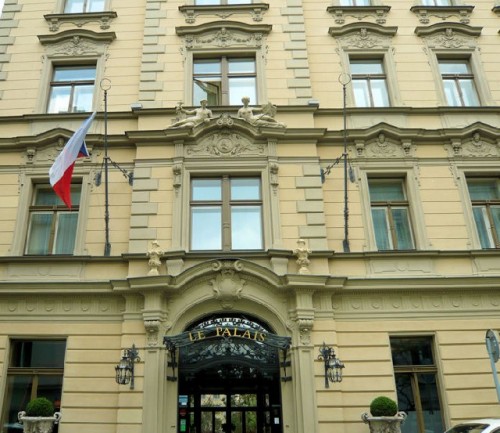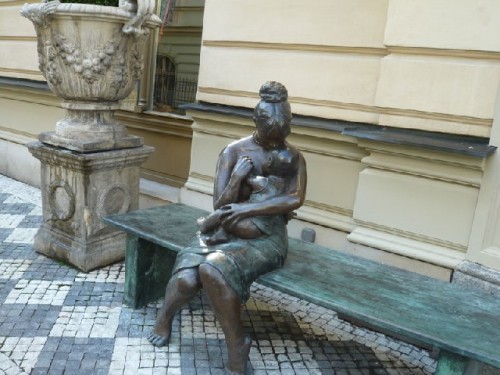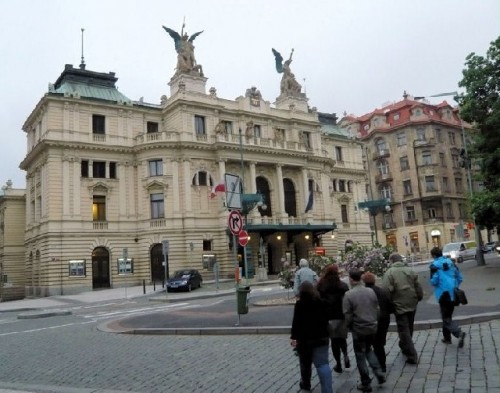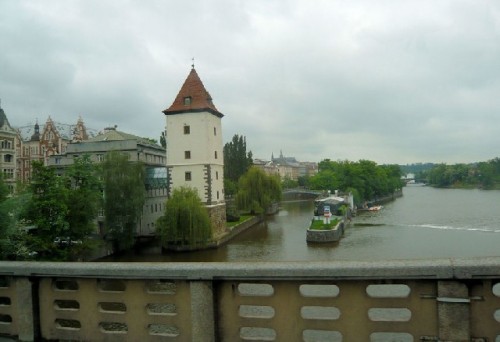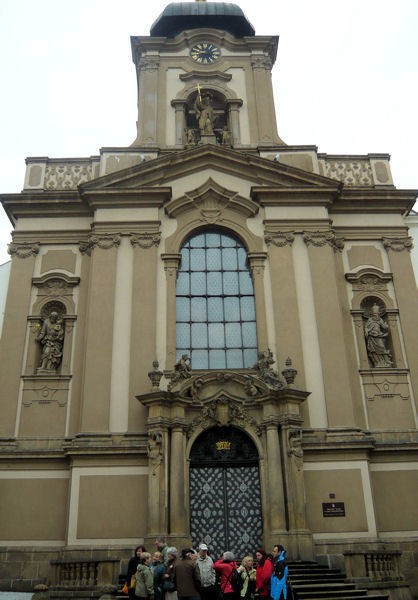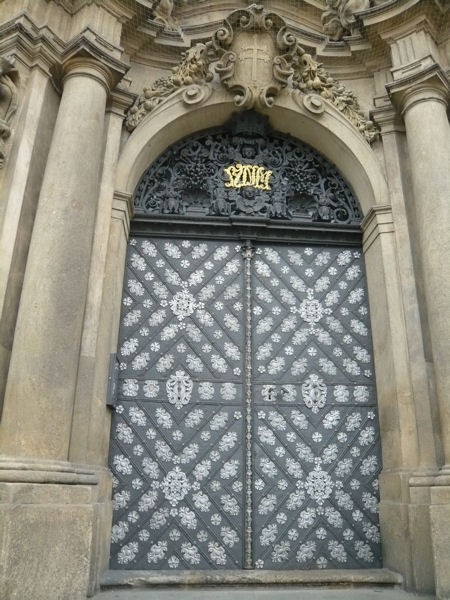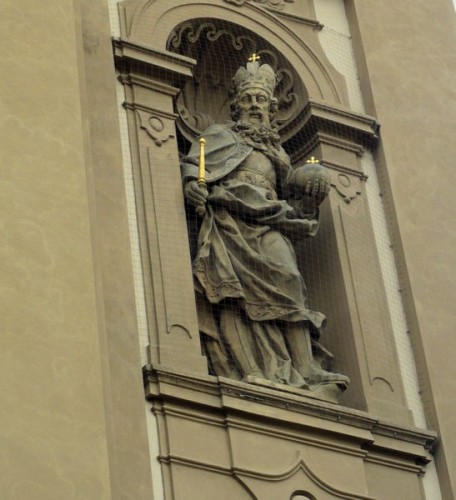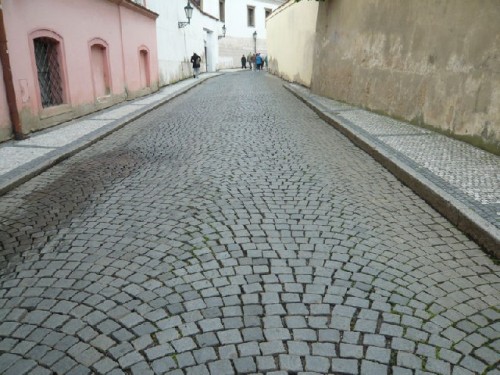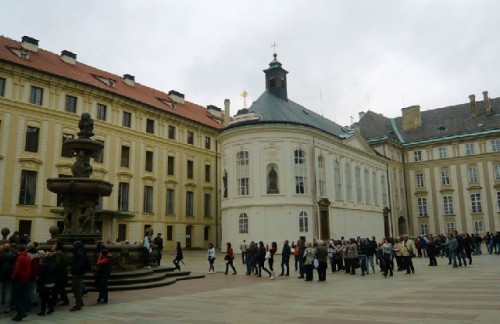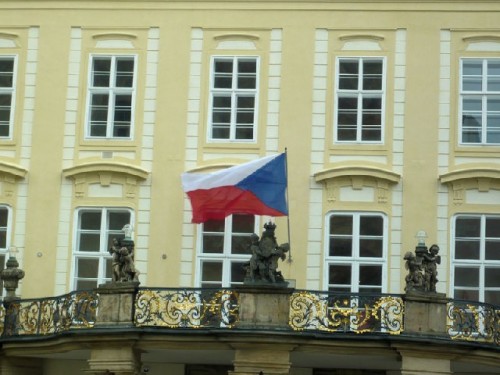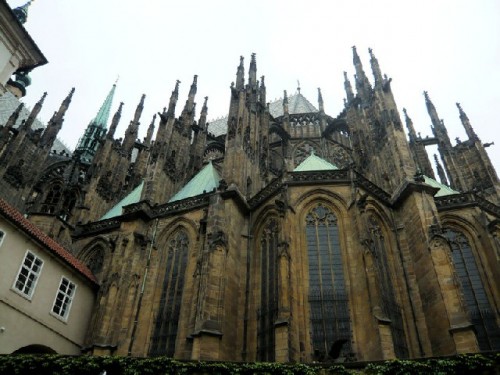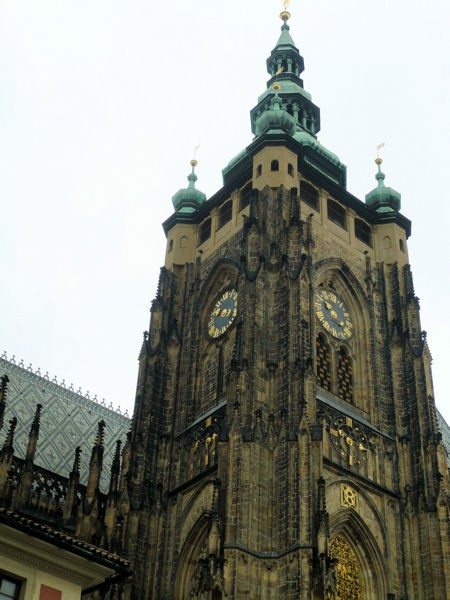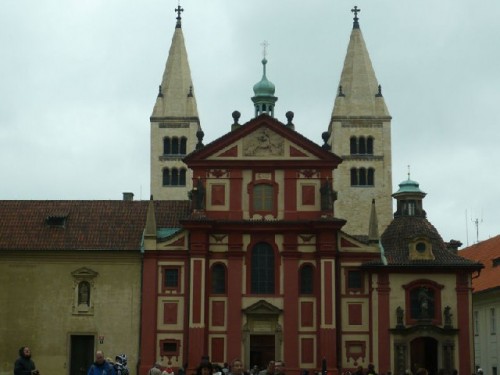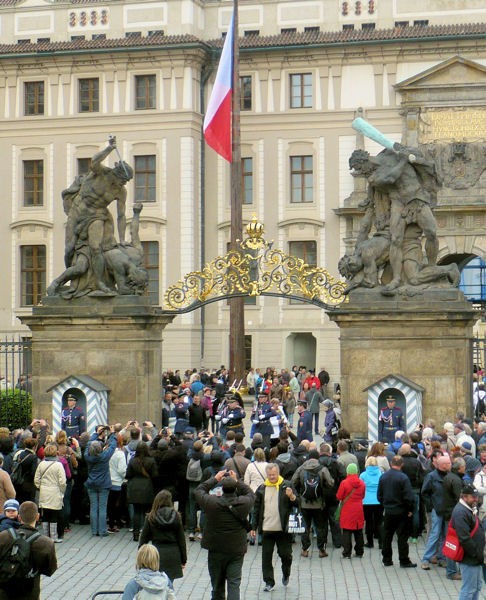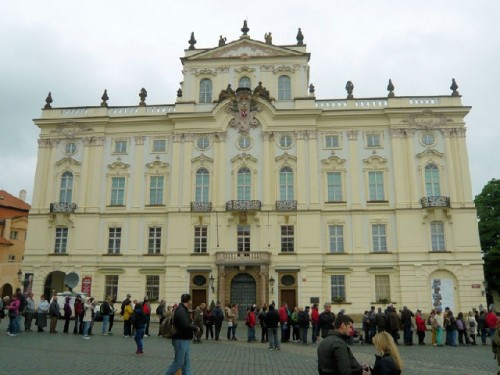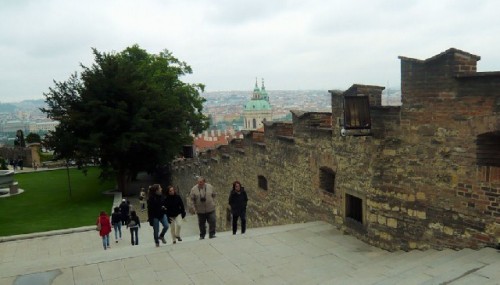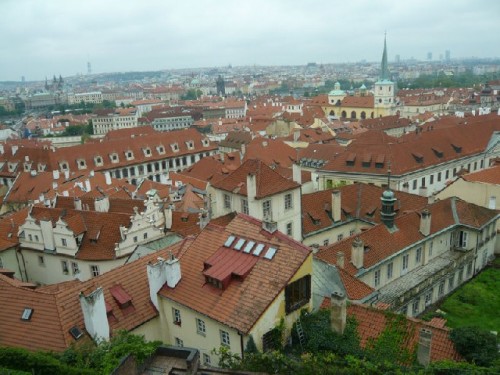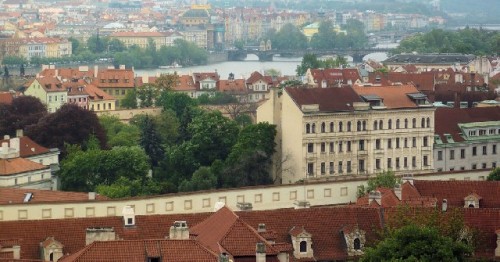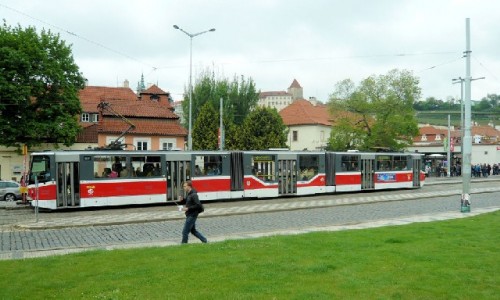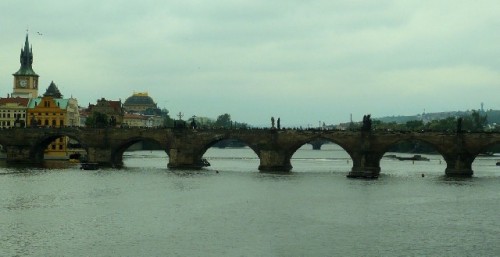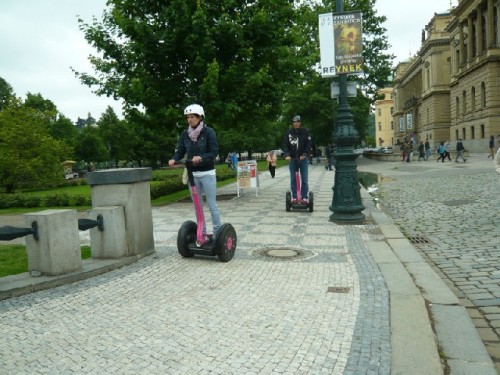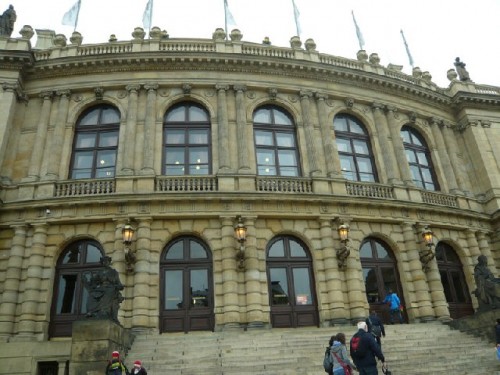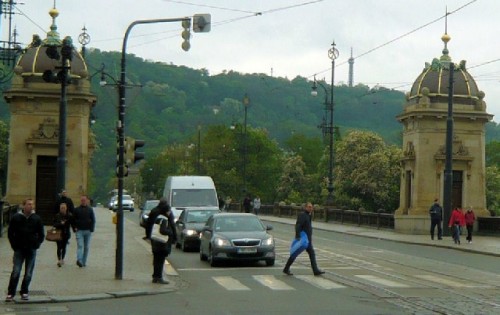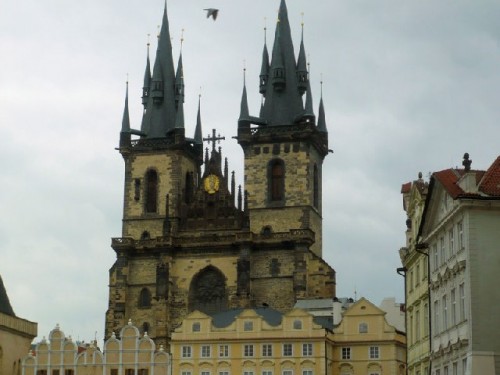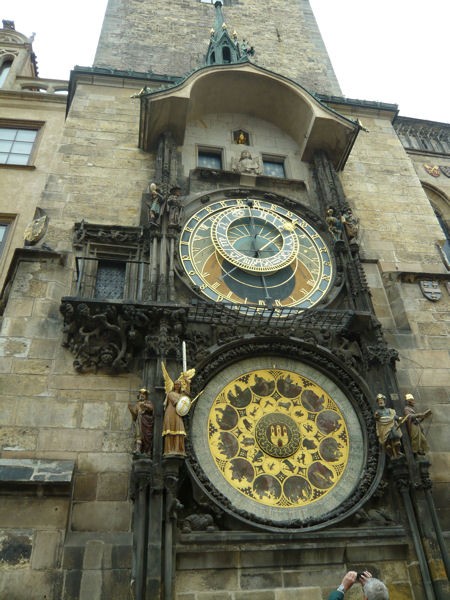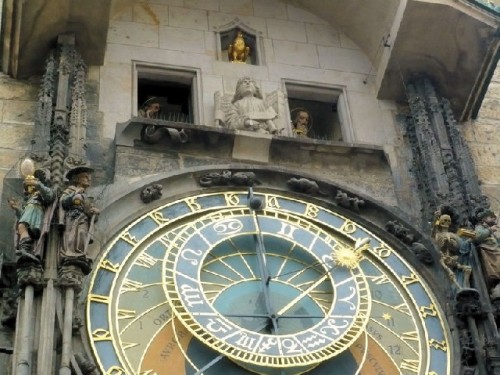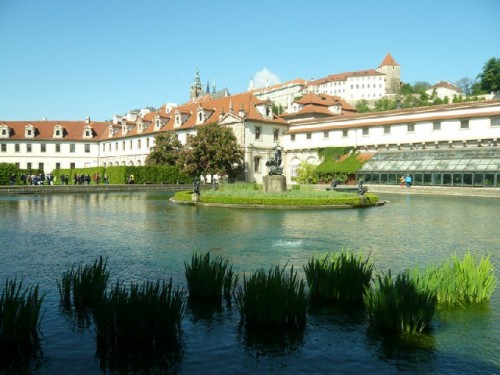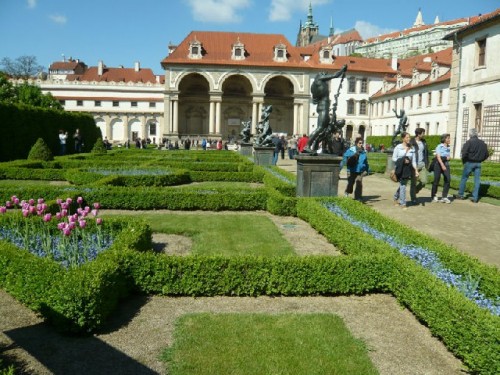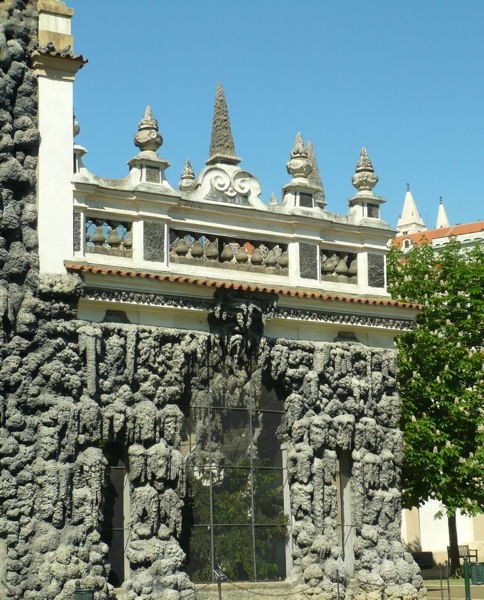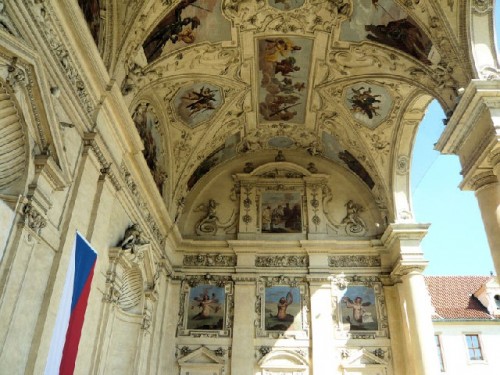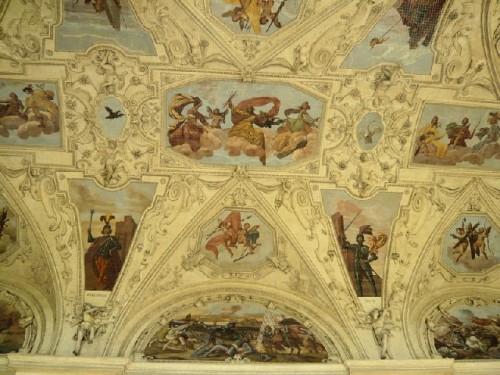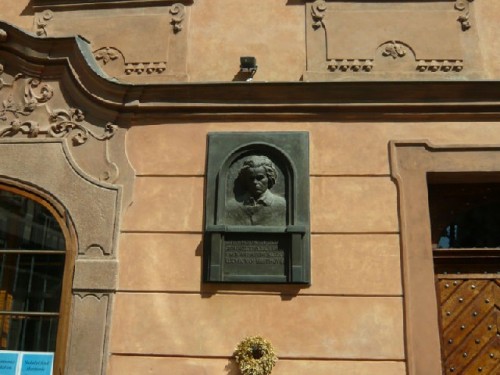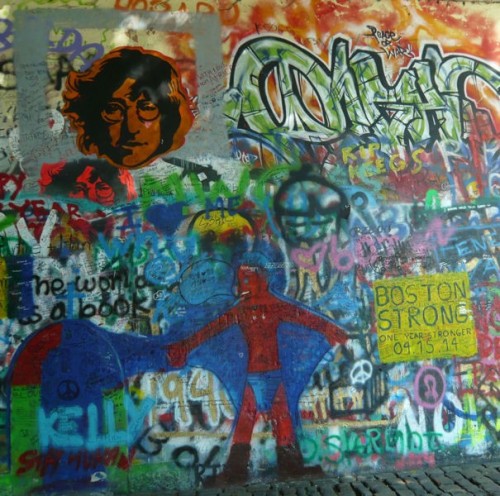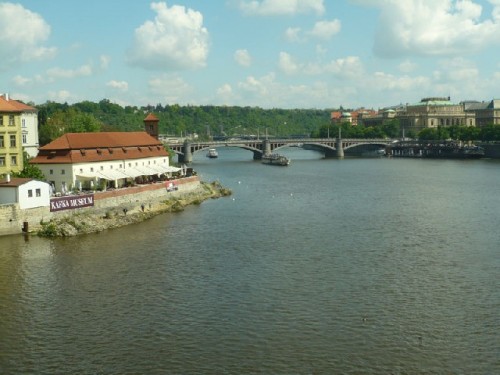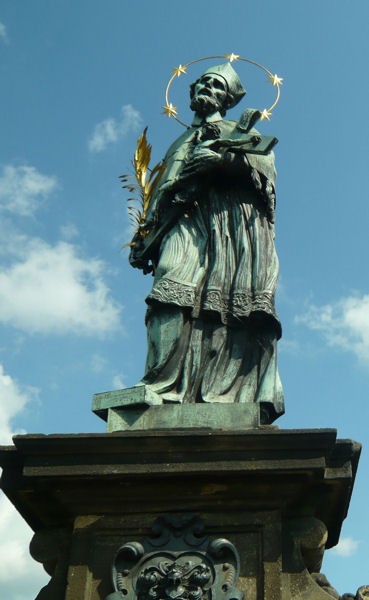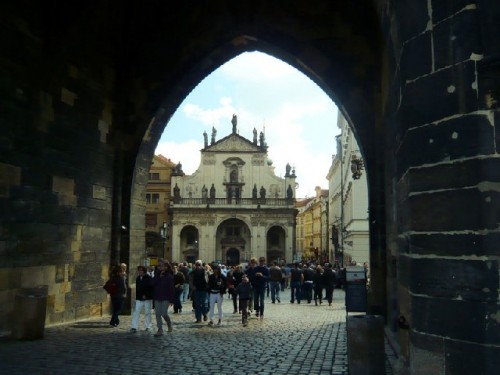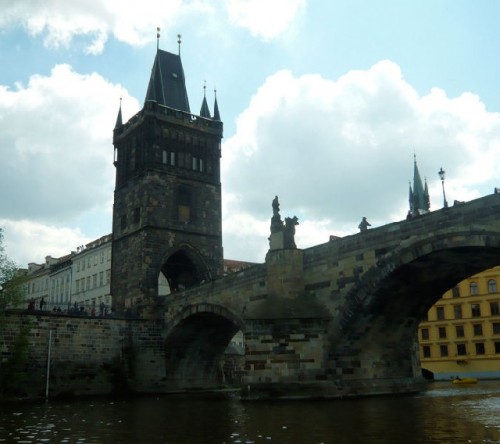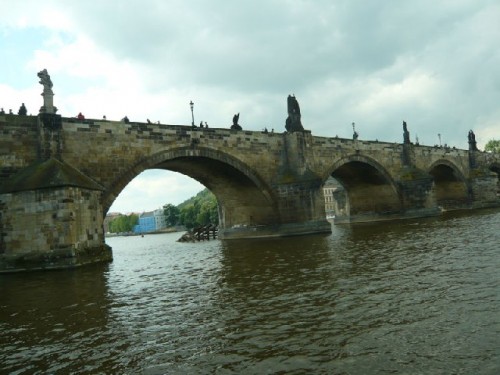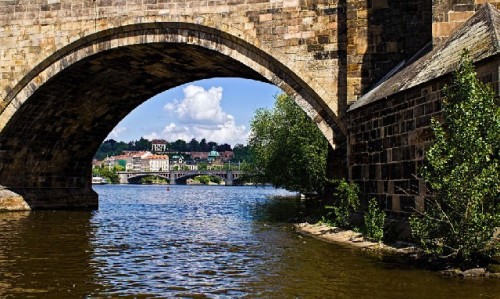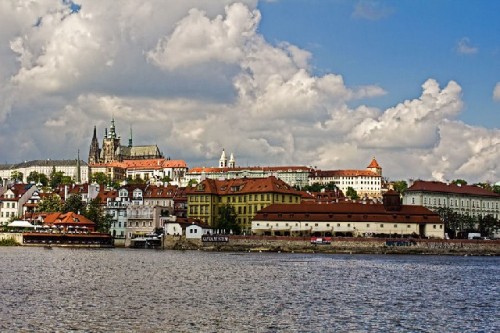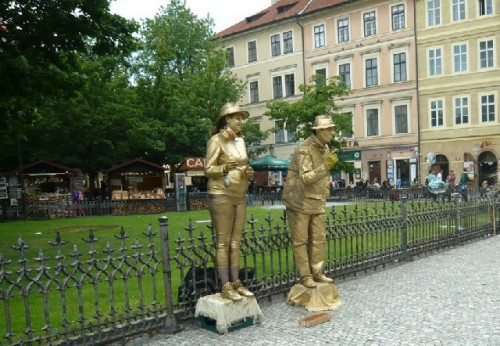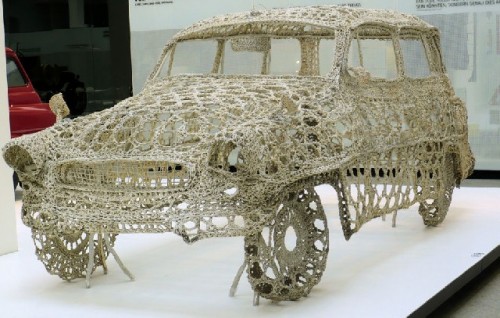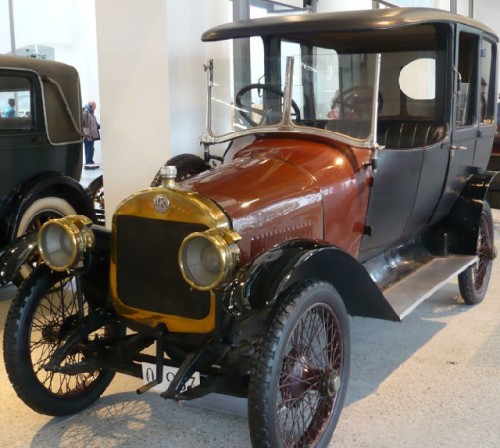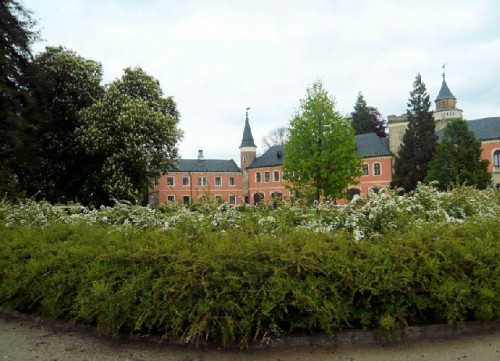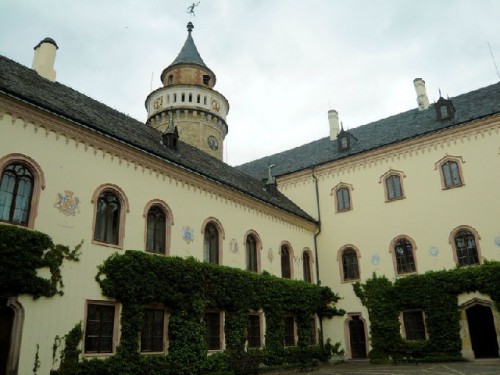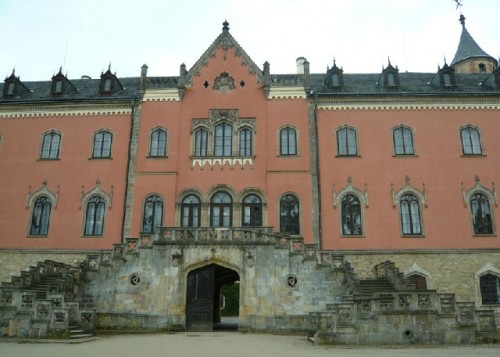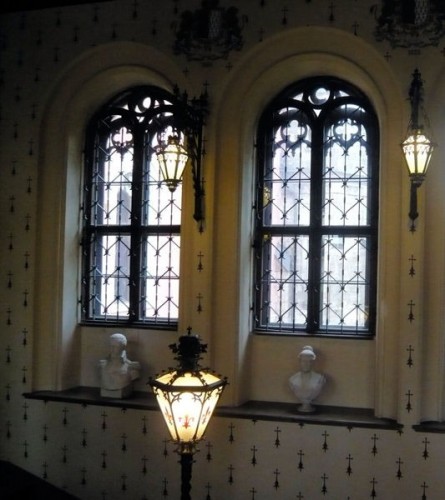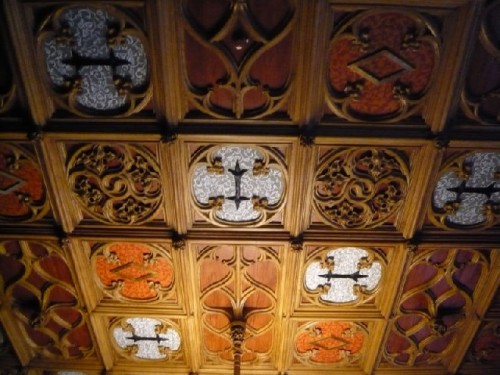Czech Republic: Part One
Prague
By: Zeren Earls - Jun 03, 2014
My childhood memories of growing up in Turkey include Czech porcelain dishes and crystal ware, along with a walnut sofa and chairs with Gobelin tapestry-covered cushions, which were used when we had company. In the early 1930s my parents had spent the first five years of their married life in what was then Czechoslovakia, an autonomous country that emerged from the fall of the Austro-Hungarian Empire following World War I. As an engineer in the military, my father was assigned by the young Turkish Republic to the Škoda factory in Pilsen, known for its advanced artillery technology.
Due to my early introduction to Czech culture through my parents’ black-and-white photographs and imported artifacts, the country had not been high on my list of places to discover until recently. A new itinerary, “Jewels of Bohemia,” offered by Overseas Adventure Travel, tempted me to travel to the Czech Republic and Slovakia, the two countries that joined after World War I to constitute Czechoslovakia, until the Velvet Revolution ended Communist control in 1989. An added attraction to this itinerary was the inclusion of the Hungarian capital, Budapest, a city I had enjoyed visiting with my late husband in the late 1980s.
A three-way ticket from Istanbul to Prague and returning from Budapest allowed me to visit relatives and friends in my country of origin following a two-week trip to Eastern Europe in early May. I arrived at Prague’s Vaclav Havel International Airport on a gray rainy day with the temperature in the mid-50s. Changing money at the airport, I took a cab to the Le Palais Art Hotel. This splendid former palace, with large marble planters flanking its ornate entrance and a charming bronze sculpture nearby of a seated mother nursing her baby, coupled with the belle époque interiors, instantly washed away the gray of the day. Emil, our trip leader, met me in the lobby with a big smile as I received my room key from the receptionist, who announced that everything in the mini-bar was free. Thus began my indulgence in two bars of chocolate over the next three days.
Most of our group of fifteen, who had arrived by 4 pm, enjoyed welcome champagne, following which we went for a walk in the neighborhood. The city’s ornate architecture was impressive, with decorative facades and gothic spires lining cobbled-stone streets. At the Hajnovka restaurant, we enjoyed the first of many bountiful and delicious meals — roast pork with eggplant, tomatoes, onions, and peppers, accompanied by dark bread and a green salad with tomatoes and feta cheese and followed by chocolate cake with cream. Czech beer or wine of our choice complemented the meal.
The next morning’s excursion began in Hradcany, the capital city’s medieval Castle Hill district. This sprawling royal complex, the world’s largest, was built in the 9th century for the princes and kings of Bohemia. It is now the seat of the President of the Czech Republic. The collection of buildings, set around three courtyards, represents eleven centuries of architectural styles, including Romanesque, Gothic, and Spanish. Our visit fell on a long weekend because of May 1, International Workers’ Day, and the palace was open to visitors free of charge. There were enormous crowds of locals and tourists waiting in the first courtyard to see the palace and at Mathias’s Gate for the noon changing of the guard, a ceremonial elite group of 60 soldiers who serve in turn.
Of the buildings, St. Vitus’s Cathedral is the largest. It was founded in 1344 as a coronation church and contains the Royal Mausoleum of the Czech Kings as well as the crown jewels. After walking around flagstone courtyards with historic buildings and sprawling gardens, we descended Castle Hill, enjoying the red-tiled roofs of the Malá Strana (Lesser Town) and views of the Staré Mesto (Old Town) across the Vltava River, which divides Prague, set on nine hills.
Walking across one of the seventeen bridges that link the city, we reached the other bank of the Vltava, where the 1885 neo-Renaissance Rudolfium concert hall is situated. Home of the Czech Philharmonic, the restored grand building is adorned with carved busts of famous musicians. The orchestra’s first performance here in 1896 was led by conductor Antonín Dvorák.
At Mlejnice, a local restaurant decorated with old farm tools, a bowl of delicious onion soup helped ward off the morning chill. Rolled turkey breast stuffed with spinach, dried tomatoes, and ham, with fried potatoes on the side, replenished us for our afternoon exploration of the city.
A few of us walked over to the National Theater to purchase tickets for the evening performance of Bedrich Smetana’s The Bartered Bride, considered the founding work of modern Czech opera. I asked for the best seat available and felt lucky to get one in the fourth row center for the equivalent of about $55.
The rest of the afternoon was free to explore on our own. I began at the old Town Square, home to grand buildings such as the Kinsky Palace and St. Nicholas’s Cathedral, completed in 1735. The bustling square is lined with cafes, bars, and shops. However, its focal point is the imposing Old Town Hall, originally dating back to 1334. Carvings of the coats of arms of the Holy Roman Empire and the Czech Kingdom adorn the 215-foot tower, which also features a 15th-century Astronomical Clock. I had to push my way through the crowds at the base of the tower to observe the hourly procession of the Twelve Apostles. I was able to snap a photo as they appeared by the window before a trumpeter signaled the end of the brief show.
A short distance away is Wenceslas Square, the site of the 1989 Velvet Revolution of peaceful protest that freed Czechoslovakia from Communism. It is the city’s modern center for business and culture. The boulevard that leads to the National Museum is filled with boutiques, fashion houses, and pleasure seekers. Avoiding further distraction to make sure I had enough time to get ready for the 7 pm opera performance, I stepped into a nearby hotel to inquire where I could get a cab. The courteous hotel concierge called one, escorting me upon its arrival.
The interior of the National Theater on the riverbank was dazzling. Four rows of ornate balconies wrapped around the orchestra and lavish decorations and curtains accented a grand stage. In my fourth row orchestra seat, I was amidst well-dressed opera lovers, including men in black tie. The program notes proudly announced that the production was staged by a woman director for the first time in the theater’s history. The Bartered Bride, a comic opera in three acts, was performed by an all-Czech cast, with English and German subtitles. The singing, staging, lighting, choreography, and costumes, inspired by animal and plant motifs, were all superb. The moving story of bygone Czech village life, told with wit and sensitivity and sung with great mastery, was definitely a highlight of my trip.
In the morning a television reporter, well-informed on the country’s history, provided us with a summary of key social and political developments since 1914, when the Czechs began fighting for independence. At the end of World War I, when the Austro-Hungarian Empire broke up, an independent Czechoslovakia was founded by leaders of the Czechs and Slovaks — two different groups culturally and linguistically — thus launching a golden age from 1918 to 1938. However, one quarter of the new state’s population was ethnically German. Favoring the German-speaking minority, Nazi dominance began in 1939, turning the rest of the population into slaves for the Third Reich and sending 80,000 Jews to concentration camps. Freed by the Soviets after World War II, the Czech government began supporting the Communist Party and kicked out the Democrats in 1948, thus becoming a satellite of the USSR.
In the socialist state, people could not speak freely; they lost private property and owners of enterprises escaped. After the Soviet invasion in August of 1968, many people began joining the Communist Party, which accepting the introduction of some freedoms. Following the fall of the Berlin Wall in 1989, the 1990 Velvet Revolution returned the country to democracy, giving property back to people. In 1993 the Czechs and Slovaks parted ways in a “Velvet Divorce,” forming two autonomous countries. In 1999 the Czech Republic, a nation of ten million, joined the European Union. The Republic is currently governed by Social Democrats.
Following this illuminating presentation, we toured the Lesser Town, or “Little Quarter,” on the left bank of Vltava River, located lower than the Old Town and therefore a target for floods, as evidenced by water marks on the surrounding walls. Originally an 8th-century mercantile settlement, it became the residence of the city’s Czech aristocracy and envoys of surrounding rulers, after Prince Bretislav moved Jewish settlers to the other side of the river in the 11th century. Today this area is a juxtaposition of charming cobbled roads and narrow streets, flanked by impressive Renaissance homes, palaces, leafy parks, and Baroque churches. Its sidewalks and roads reveal beautiful patterns, constructed with stone remnants from these edifices. Some embassies are still located here, including the American embassy up on a hill.
A visit to the palace of Albrecht Wallenstein provided a glimpse into the grandiose lifestyle of the aristocracy. Built on the site of 22 brick buildings and several gardens (1624-1630), the palace grounds feature painted porticos and bronze statues. Continuing through the narrow streets of the Lesser Town, we encountered a graffiti wall, which included homage to the anniversary of the 2013 Boston Marathon bombing —heart-warming indeed.
A stairway led up a wall to the famed Charles Bridge. Commissioned by King Charles IV in 1357, the bridge features ornate gates, 16 arches and 30 Baroque sculptures. It bustled with tourists and locals alike, as well as street performers, souvenir carts, and food vendors. People crowded around a sculpture of St. Ján Nepomucký, erected at the location where his body was thrown into the river. At the base of the sculpture they rubbed bronze images depicting the incident, hoping for the cult figure to fulfill their wishes.
Although a little chilly, a cruise along the Vltava River provided another angle for viewing the bridges and the riverbanks. Warming up over a bowl of soup, I joined an optional tour outside the city to the Škoda Auto Museum and a tour of the 18th-century Sychrov Castle, a French château on Czech soil.
The first Škoda car was manufactured in 1895 in Mladá Boleslav, a town northeast of Prague. Still in operation today, Škoda is the only car manufacturer in Central and Eastern Europe. The production halls, used until 1928, now serve as exhibition halls for the museum. The exhibits show the evolution of the brand, accentuating milestones in vehicle design and technical innovations. A display of vintage cars includes a crocheted fantasy car cover. Adjacent to the museum is the modern plant currently in operation.
Sychrov Castle is the summer palace of the Rohans, an old French aristocratic family who escaped the revolution by settling in Bohemia and in 1820 bought the castle, formerly part of the Wallenstein estate. Charles Rohan, the first landlord at Sychrov, started a Classicist reconstruction of the small Baroque house and later adapted the interiors to accommodate his royal guests, French King Charles X and his family and convoy during his emigration. In the mid 19th century, the heirs of the estate introduced Romantic reconstructions, adding towers to give the castle the look of a feudal residence. With its characteristic traditional French gardens, the castle dominates the landscape, appearing from all directions within a vast park.
A large art collection in the castle includes pieces imported from France, in particular portrait paintings. Skillful craftsmen, including a cabinet maker, an upholsterer, a stone cutter, a glass painter, and a porcelain painter, were recruited for the Romantic adaptations of the castle interiors. The carved ceiling in the Royal Suite is especially noteworthy. The Rohan era at Sychrov ended in 1945, when the castle was confiscated. In 1950 it opened to the public and was declared a national heritage site in 1995.
Following our tour we were treated to an organ recital with vocal accompaniment in the chapel. Beginning with Dvorak’s Ave Maria, the program also featured pieces by Handel and Haydn. Dinner at the château restaurant offered a French menu consisting of onion quiche with a delicious arugula salad and gratin of potato, sausage, and cheese, followed by grilled brioche with maple syrup and ice cream. Ending our day on a sweet note, we returned to our own palace, the Le Palais Hotel, for a final night in Prague, in anticipation of the next leg of our journey to Ceský Krumlov.
(To be continued)

